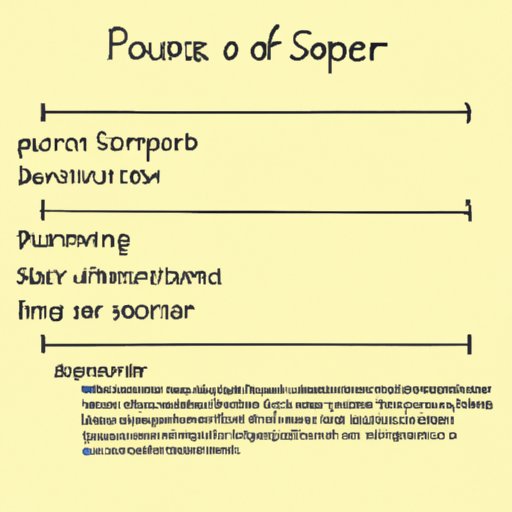Introduction
A source is any material used as evidence or support in an academic paper or project. Sources provide information that can enhance and support an argument or perspective. Sources can be found in books, journals, websites, interviews, and other places. Knowing how to find, evaluate, and use sources appropriately is an important part of writing.

Definition of Sources in Writing
Sources in writing are materials such as books, articles, reports, websites, and interviews used to support an argument or perspective. Sources provide evidence that can be used to back up a claim. Sources can also provide additional information that can help readers better understand a topic or issue.

Purpose of Sources in Writing
The purpose of sources in writing is to provide evidence and support for an argument or perspective. Sources can also provide additional information that can help readers better understand a topic or issue. Sources can also be used to challenge existing assumptions and beliefs about a topic. Finally, sources can be used to add credibility to a paper or project.

Examples of Sources in Writing
There are three main types of sources: primary, secondary, and tertiary. Each type of source has its own set of characteristics and uses. It is important to know how to identify each type of source and when to use it.
Primary Sources
Primary sources are original documents or records created by people who were involved in the event or topic being studied. Examples of primary sources include diaries, letters, newspaper articles, photographs, interviews, government documents, and court records. Primary sources can provide firsthand accounts of events and experiences.
Secondary Sources
Secondary sources are documents or records that interpret or analyze primary sources. Examples of secondary sources include textbooks, magazine articles, encyclopedias, biographies, and reviews. Secondary sources can provide additional context and analysis of primary sources.
Tertiary Sources
Tertiary sources are documents or records that summarize or synthesize secondary sources. Examples of tertiary sources include bibliographies, indexes, and dictionaries. Tertiary sources can provide an overview of a topic or issue.
How to Cite Different Types of Sources
When using sources in writing, it is important to properly cite them. Properly citing sources shows that you have done your research and used reliable information in your paper or project. There are different ways to cite different types of sources.
Citing Primary Sources
When citing primary sources, you should include the author’s name, title of the document, date of publication, and the source where you found the document (if applicable). For example: John Smith, “My Diary,” June 5, 2020, Personal Collection.
Citing Secondary Sources
When citing secondary sources, you should include the author’s name, title of the article or book, year of publication, and the source where you found the article or book (if applicable). For example: John Smith, The History of the World, 2020, Oxford University Press.
Citing Tertiary Sources
When citing tertiary sources, you should include the author’s name, title of the document, edition or version number (if applicable), year of publication, and the source where you found the document (if applicable). For example: John Smith, Encyclopedia of History, 2nd ed., 2020, Oxford University Press.
What is a Source? An Overview of Primary and Secondary Sources
Now that you know the different types of sources, let’s take a closer look at primary and secondary sources. Primary sources provide firsthand accounts of events and experiences, while secondary sources provide additional context and analysis. Both primary and secondary sources can be used to support an argument or perspective.
Primary Sources
Primary sources are documents or records created by people who were involved in the event or topic being studied. Examples of primary sources include diaries, letters, newspaper articles, photographs, interviews, government documents, and court records. Primary sources can provide firsthand accounts of events and experiences.
Secondary Sources
Secondary sources are documents or records that interpret or analyze primary sources. Examples of secondary sources include textbooks, magazine articles, encyclopedias, biographies, and reviews. Secondary sources can provide additional context and analysis of primary sources.
Using Sources Effectively: Tips for Writing with Sources
Now that you know the different types of sources and how to cite them, let’s look at some tips for using sources effectively. When using sources in writing, it is important to choose appropriate sources, use accurate information, incorporate sources into your writing, and always cite sources.
Choose Appropriate Sources
When choosing sources, it is important to make sure they are appropriate and reliable. Make sure the sources you choose are relevant to your topic and come from reputable sources. Avoid using biased or outdated sources.
Use Accurate Information
When using sources, make sure you are using accurate information. Double-check facts and figures to make sure they are correct. Verify information from multiple sources whenever possible.
Incorporate Sources Into Your Writing
When incorporating sources into your writing, make sure to paraphrase and summarize information accurately. Give credit to the original author by citing the source. Do not plagiarize or copy information directly from a source without citing it.
Always Cite Sources
When using sources in writing, it is important to cite them properly. Citing sources shows that you have done your research and used reliable information in your paper or project. Make sure to follow the proper format when citing sources.
Conclusion
In conclusion, sources in writing are materials such as books, articles, reports, websites, and interviews used to support an argument or perspective. Sources can be primary, secondary, or tertiary. When using sources in writing, it is important to choose appropriate sources, use accurate information, incorporate sources into your writing, and always cite sources. Knowing how to find, evaluate, and use sources appropriately is an important part of writing.
(Note: Is this article not meeting your expectations? Do you have knowledge or insights to share? Unlock new opportunities and expand your reach by joining our authors team. Click Registration to join us and share your expertise with our readers.)
